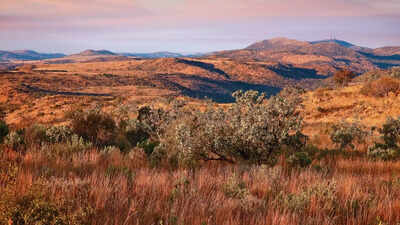ARTICLE AD BOX

UNESCO World Heritage Sites are designated for their cultural, historical, or natural significance, and some of the oldest sites date back thousands or even millions of years due to their archaeological, geological, or ecological value.
Below is a list of 10 of the oldest UNESCO World Heritage Sites, based on their historical or geological age.
Barberton Makhonjwa Mountains, South Africa
Aged approximately 3.6 to 3.25 billion years, the Barberton Makhonjwa Mountains contain some of the oldest rocks on Earth, dating back 3.6 billion years. These volcanic and sedimentary rocks provide evidence of early life forms, including microfossils and stromatolites, as well as insights into ancient meteorite impacts and volcanic activity.
Vredefort Dome, South Africa
Vredefort Dome dates back approximately 2 billion years, and is the world’s largest and oldest known meteorite impact site. This site was formed about 2 billion years ago when a massive asteroid struck Earth. It spans over 186 miles, and is surrounded by lush landscape.
Lower Valley of the Awash, Ethiopia
Aged approximately 4.4 to 3.2 million years, the Awash Valley in Ethiopia is one of humanity’s most significant archaeological sites, where the skeletal remains of “Lucy” (3.2 million years old) and “Ardi” (4.4 million years old) were discovered.
These hominid fossils are among the earliest known ancestors of humans, making the site crucial for understanding human evolution.

Gros Morne National Park, Canada
Located on Newfoundland’s west coast, Gros Morne National Park (aged approximately 1.2 billion years) showcases geological evidence of continental drift from 1.2 billion years ago. The park’s dramatic landscape, with exposed rocks from Earth’s mantle and deep ocean crust, illustrates plate tectonics in action.
Chengjiang Fossil Site, China
The Chengjiang Fossil Site in Yunnan, China, is renowned for its exceptionally preserved fossils from the Cambrian period, a time of rapid evolutionary diversification. These fossils, including early vertebrates and diverse marine organisms like sponges and jellyfish ancestors, date back over 520 million years.

Wet Tropics of Queensland, Australia
Aged approximately 180 million years, the Wet Tropics of Queensland is home to Daintree Rainforest, the world’s oldest rainforest.
The site preserves plant and animal species from the Mesozoic era, some dating back 180 million years. Home to ancient songbirds from the Cretaceous period and other “living fossils,” this site reflects Australia’s connection to the ancient Gondwana supercontinent.
Burgess Shale, Canadian Rocky Mountain Parks, Canada
Approximately 540 million years old, the Burgess Shale is one of the world’s most significant fossil sites, dating back to the Cambrian period around 540 million years ago. Its fossils of soft-bodied marine organisms, including early chordates, provide critical evidence of the Cambrian Explosion, a pivotal moment in evolutionary history.



.png)
.png)
.png)
















 1 hour ago
4
1 hour ago
4









 English (US) ·
English (US) ·